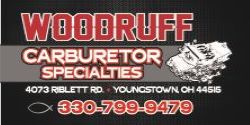TBass
Well-Known Member
Alright guys, I am not much on lingering around on forums asking opinions, but I am kinda beside myself on this and need some CURRENT input. I have a 66 B body with the original 361. It runs like a dream because the guy I got it from did a farm boy overhaul on it. However, the dude let it freeze in the cold weather and cracked the block really bad. I've dealt with it for close to ten years now and I am about ready to start building it's replacement. First I will say that I decided on using a 400. I wanted to stay with a B block in this car because my intent is to keep it looking virtually stock. (I am also tossing around the 451 stroker option) Obviously my 361 has a good set of 516 heads. The 400 I bought came with a set of 452 heads. I have read endless forums and articles about the differences in all these heads. There are as many people fond of the 516s as there are of 452s. I am looking for a pump gas cruiser, but I want it to have the muscle car "thump" when I'm ready for it. This car is an A/C car with power steering and power breaks, so I am obviously not going for 12.5:1 compression with a .510" lift cam. I want my accessories to still function properly so I am going with a VooDoo cam with an operating range of 1800-6200. I have no issues getting the exhaust valves changed in the 516 heads if it is worth it. But is it worth it? Most information out there is from people who are all out racers and looking for flowing 300CFM or more. I am not about decking the block or shaving the head and jacking with all that geometry. I am going to run headers and a stock 4-V intake. Just trying to decide which heads to invest in on this.....I will most likely end up yanking the steel crank from my 361 and putting it in the 400 with Keith Black pistons that will raise that compression height. If the 516 heads truly bring up my compression, I will buy Mopar Performance porting templates and attack those heads and sell my 452s.















